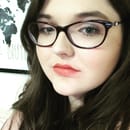Upon first glance, Japan may seem like a “gay-friendly” country. There are no outright anti-homosexual laws in Japan, and police rarely harass the LGBTQ+ community or raid bars (source). Indeed, a 2013 phone survey in Japan showed that 54% of participants thought “society [should] accept homosexuality,” which is among the highest of Asian/Pacific countries (source). However, this does not mean that the Japanese LGBTQ+ community is thriving. Lesbian voices are consistently silenced (source), no laws prohibit discrimination (source), the community faces high rates of mental illness (source) and intimate partner violence (source), and the place where lesbianism has gained the most acceptance is in pornography (source). Despite Japan’s apparent permissiveness of the LGBTQ+ community as a whole and lesbians more specifically, the community still faces many challenges in gaining acceptance.
Japanese history contains several mentions of homosexuality (source). Since Shinto and Buddhism do not have the same anti-homosexual sentiments that Christianity does, it was generally viewed as acceptable. Male/male relationships, called nanshoku (male color) or wakashūdō (the way of youths) exist from pre-modern times and are particularly present in the Edo period. This often involved an older adult man taking on a mentor-like and sexual relationship with an adolescent boy (source). The most famous poet of this era, Saikaku, wrote a well-known poem about male homosexual affairs (source). In contrast to this prevalence, very little evidence of female/female relationships exist (source). Lesbian history in Japan is, for the most part, devoid of the intricacies and attention are given to gay men (source). Indeed, the term josh-oku (female color), the theoretical female/female equivalent of male color, has been used to refer to women’s sexual attraction in male/female relationships (source). It is possible that lesbianism was discouraged during this period (source). The space evidence of female/female relationships from this time is in the form of ukiyoe, which often contain a male voyeur suggesting that this content was purely for the male gaze (source). During the Taishō period, the term dōseiai (same-sex love) emerged as an all-encompassing term roughly equivalent to homosexuality (source). This was the first time in Japanese history that lesbian and gay desire relationships were grouped together (source). Homosexuality did not begin to be seen as psychopathology until the influx of Westerners during the Meiji period (source). During this period, sodomy briefly became illegal, but these laws did not last for long (source). Lesbian relationships were talked about, but mainly in the hentai zasshi (perverse magazines) introduced to the country by Westerners (source). This content was primarily for the male gaze, but the magazines still gained a number of women readers and perhaps some women content creators, although works were largely under pseudonyms. Regardless, the amount of woman/woman content was something rarely seen in hentai zasshi’s Western counterparts (source).
In the post-war period, the words rezubian and rezu (loan words from the English lesbian) came into use, but unfortunately, this was in the content of hentai zasshi, which were flourishing, containing everything from sex-related articles to outright erotica (source). As in prior years, the content was primarily for the male gaze, and the ratio of content made by women is unknown (source). Lesbianism was now firmly entrenched as a trope in pornography for men and began to be associated with sadomasochism (source). Several academic books containing mentions of lesbians were published in the late 1960s and early 1970s, which contained contradictory messages that both offered compassion towards lesbians but also treated homosexuality as a pathology to be treated (source). At this time, the landmark lesbian group Wakakusa no Kai (Young Grass Club) was formed, beginning the unification of a lesbian community in Japan (source). The concept of political lesbianism—women who are attracted to men but who identify as lesbians in an act of rejection of the patriarchy—began to attract growing numbers of women, which resulted in a strict gatekeeping of the community (source). This, unfortunately, led to a refusal to admit women who were still exploring their sexuality and who might not have identified themselves as a lesbian at that point in time, which is especially problematic as the associations with pornography might have led many women to dislike the connotations of rezubian (source).
While Japan was affected by the AIDS crisis, the government portrayed it as an “American disease,” leading to a nationalistic rather than homophobic reaction (source). While the Japanese LGBTQ+ community rallied together in this time, it was by no means equivalent to the United States community’s experience with AIDS (source). Regumi Studio (Lesbian Group Studio), a group of self-described “feisty lesbians,” was formed in the mid-eighties, a community with a stronger political stance than Wakakusa no Kai (source). In the 1990s, increasing amounts of gay men, as well as some lesbians, began to appear in Japan’s popular culture (Lunsing, 1997. This led to an expanding national dialogue on LGBTQ+ issues, which scholars have christened Japan’s “gay boom” (Lunsing). While this was often for the purposes of erotism for heterosexual consumption, some of this content was created by LGBTQ+ individuals for LGBTQ+ individuals, including lesbian periodicals like Anise or the famous book Onna wo Ai Suru Onnatachi no Monogatari (Stories of Women Who Love Women) (source). Regardless of the often-sexual nature of this “gay boom” content, it did aid in the community’s visibility (source).



